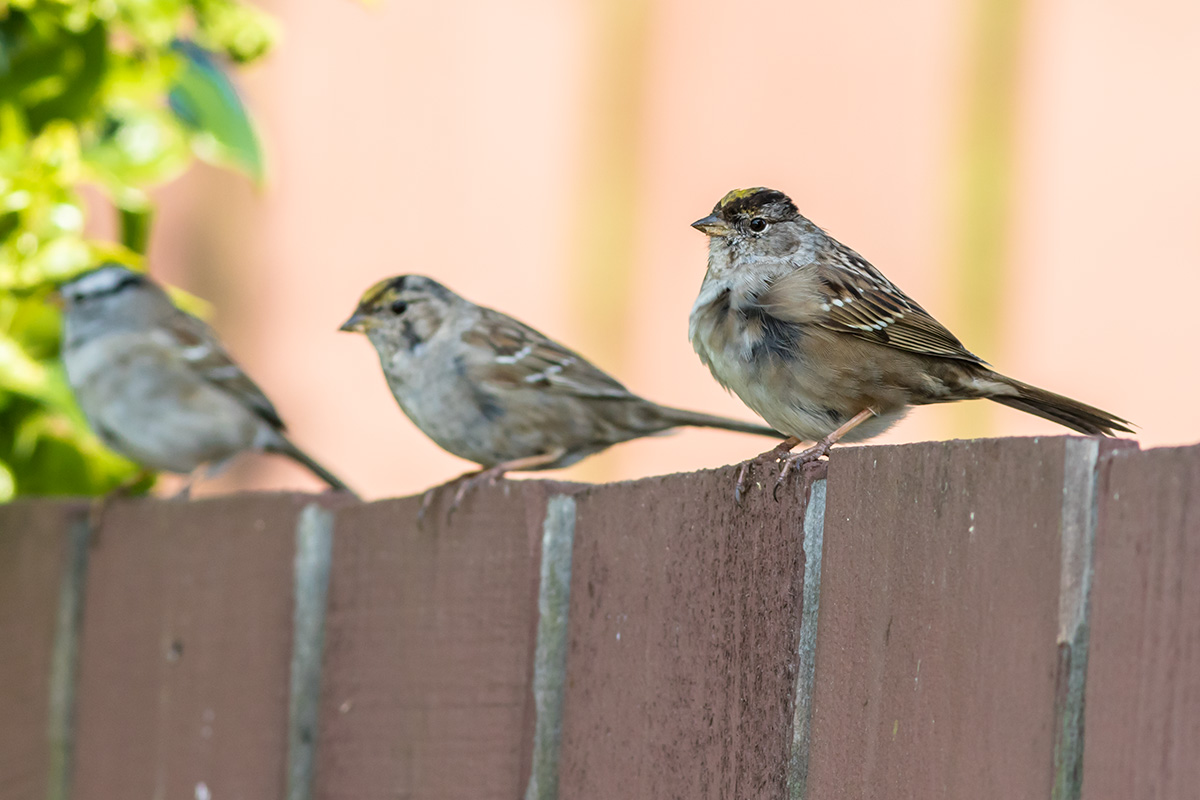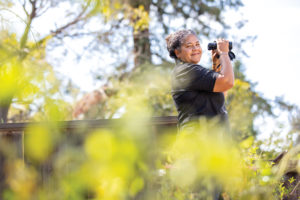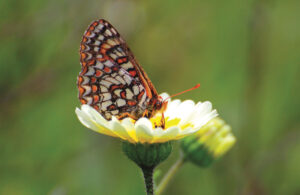
Golden-crowned sparrows spend summer in northern North America, singing their sad little descending songs from the branches of dense shrubs. Then they fly thousands of miles to spend winter in places like the Bay Area. They’re not the most eye-catching of birds, but you might notice them anyway because unlike most birds, they sing through the winter.
In fact, the sparrow singing in your yard right now might be the same individual you heard last fall. Scientists at UC Santa Cruz banded golden-crowned sparrows and learned that they flew from coastal Alaska and Canada to the Santa Cruz Arboretum, and on arrival they returned to the exact bush they lived on the year before. The sparrows that did switch bushes tended only to go 30 meters—a basketball court length away. (Talk about Netflix and chill.) Many studies show birds return to precise breeding spots every spring, but this is among the few studies demonstrating they do the same thing in fall.
Fidelity to their winter habitat means golden-crowned sparrows have the same sparrow neighbors every year, too. Neighbors forage with neighbors, forming small flocks, which led scientists to wonder if the birds return annually because they like the location or the neighbors. They found that familiarity matters: the birds can recognize their neighbors, and they have a hierarchy and social structure within the flock. These aren’t family units—the neighbors aren’t biologically related, and they don’t migrate together. They are a geographic community that only forms in winter, almost like people from up and down the East Coast who circle their RVs together in Joshua Tree every winter.
From a biological perspective, though, the birds’ wintering ground really is their home, and they’re just renting a vacation house on their breeding grounds up north. Birds spend more time in their winter habitat than in their summer habitat, but ironically, we better understand bird lives in their breeding grounds.
“We know virtually nothing about the social lives of migrant birds in their wintering grounds,” says Dr. Daizaburo Shizuka, a biologist at the University of Nebraska–Lincoln and one of the scientists studying golden-crowned sparrows at UC Santa Cruz. “By not understanding that, we basically don’t know the half of their lives.”
And there’s still more to learn about golden-crowned sparrows during winter, including why they sing. It’s not males practicing songs to attract mates come spring, nor is it males still coming down from a testosterone high of singing and breeding. Scientists have discovered female golden-crowned sparrows sing in winter, too, and studies of DNA samples are examining whether the females sing just as much as males do.
Understanding of bird social structures could inform conservation efforts. If birds migrate to the same place because they like their neighbors, then it’s important to help preserve place and social structures. A sparrow’s social environment could matter just as much as its physical environment.
Humans can certainly relate, as we try to physically distance from each other but maintain social connections. Shizuka has thought a lot about lessons from his work that apply to the current moment. His research shows that familiarity among avian individuals matters and informs their actions, a truth that can extend to humans, especially as scientists share important public health messages and more of us get information online. “You can’t just come in as a stranger and expect people to listen to you.” You have to build trust.
Correction: this story has been updated to correct the spelling of Daizaburo Shizuka’s name.




